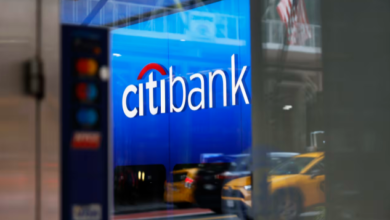7 Programs That Help Struggling Retirees With Living Costs


According to the U.S. Census Bureau, the poverty rate among Americans aged 65 and older increased from 8.9% in 2020 to 10.3% in 2021. That was the only age group to see a statistically significant increase during that period.
Millions of older Americans are eligible for assistance programs — but might not be taking advantage of them. Before you spend money you don’t need to, here are several programs to help you manage your living costs as a senior.
1. Supplemental Nutrition Assistance Program (SNAP)

What it does: The SNAP program is the largest anti-hunger program in the United States. It is a federal program but is run at the state level. It’s designed to supplement the food budget of low-income families, helping those facing hunger insecurity purchase healthy food.
Whom it’s for: Generally, to qualify for SNAP, you need to meet your state’s income and asset requirements. There are special rules for those whom the program considers elderly — that is, aged 60 or older. To qualify, you need to submit an application through your state’s SNAP office.
The AARP estimates that 16 million adults aged 50 and older who might be eligible for SNAP benefits aren’t using them. This includes more than 3 million who could be eligible for more than $200 a month in SNAP benefits.
2. Commodity Supplemental Food Program

What it does: The U.S. Department of Agriculture sends food and administrative funds to participating states and Indian Tribal Organizations. That food is then distributed to eligible individuals, and seniors can apply to participate through their state.
Whom it’s for: Designed for low-income seniors at least 60 years old, the Commodity Supplemental Food Program is intended to help participants supplement their diets. The food packages that are distributed offer nutritious foods that might otherwise be missing from the meals of older Americans.
3. Medicare Savings Programs

What it does: There are four different Medicare Savings Programs, all run at the state level. Most help pay for Medicare Part A or Part B premiums, but one also helps with Medicare deductibles, coinsurance and copayments.
Whom it’s for: Generally, to qualify for any of the four programs, someone must have income and other financial resources below certain limits, which are outlined on the Medicare program’s “Medicare Savings Programs” webpage. However, these limits increase every year, and there are some exceptions to the limits in some states. In fact, more than 3 million seniors aged 65 or older are eligible for Medicare Savings Programs but have not enrolled, according to Kaiser Health News.
4. Extra Help

What it does: As part of the Medicare program, Extra Help is designed to help eligible seniors pay their Medicare Part D premiums, deductibles, coinsurance and copayments. Medicare Part D is the prescription drug coverage component of Medicare. Seniors who need help paying their drug costs can benefit from Extra Help.
Whom it’s for: Extra Help is aimed at seniors who meet income and resource thresholds. In general, if you’re on Medicare and qualify for full Medicaid coverage, get help from your state to cover your Medicare Part B premiums or receive Supplemental Security Income (SSI), you likely qualify for Extra Help. Depending on the situation, you might qualify automatically. However, some eligible seniors might need to apply. If you don’t automatically receive Extra Help, you can apply through the Social Security Administration.
5. Low Income Home Energy Assistance Program (LIHEAP)

What it does: LIHEAP is designed to help low-income families and seniors with energy costs so they can stay warm in the winter and cool in the summer. Unsafe heating and cooling practices can cause health problems, and LIHEAP distributes funds that can be used to cover energy costs through state and local programs.
Whom it’s for: This program isn’t exclusively for seniors, but many low-income seniors can benefit. Seniors are especially vulnerable to health issues that come from overheating, and they also develop increased cold sensitivity. Cold issues can be especially problematic for those with diabetes, a condition that impacts 15.9 million seniors.
6. Lifeline

What it does: Phone (including mobile) and broadband internet service are increasingly important to remain connected. Lifeline is administered by the federal government in every state and is designed to provide discounted services to low-income consumers.
Whom it’s for: Those who meet the income requirements can go through eligible providers to receive communications services at a discount. If you qualify for SNAP benefits, Supplemental Security Income (SSI), Medicaid, or some other programs, you also qualify for Lifeline.
7. Supplemental Security Income (SSI)

What it does: This federal program is administered by the Social Security Administration, but it is not funded by Social Security tax dollars. Instead, it sends out monthly payments using general tax revenue. The money is intended to help low-income and disabled individuals pay for basic needs. The SSI program is available to those on Social Security, although your Social Security benefits may affect how much you receive from SSI.
Whom it’s for: Those age 65 and older who meet income and resource requirements can apply for SSI. It is also available to younger people who are blind or disabled. These extra SSI payments can help you with living expenses if you’re struggling. You can apply through the Social Security Administration.
Are you eligible for assistance?

Don’t assume that you’re not eligible for assistance. Millions of older adults who qualify aren’t using these programs to their benefit. Find out what benefits are available to you using the National Council on Aging’s free BenefitsCheckUp tool. You can also contact your Area Agency on Aging to learn about programs and apply for benefits.
Source link





